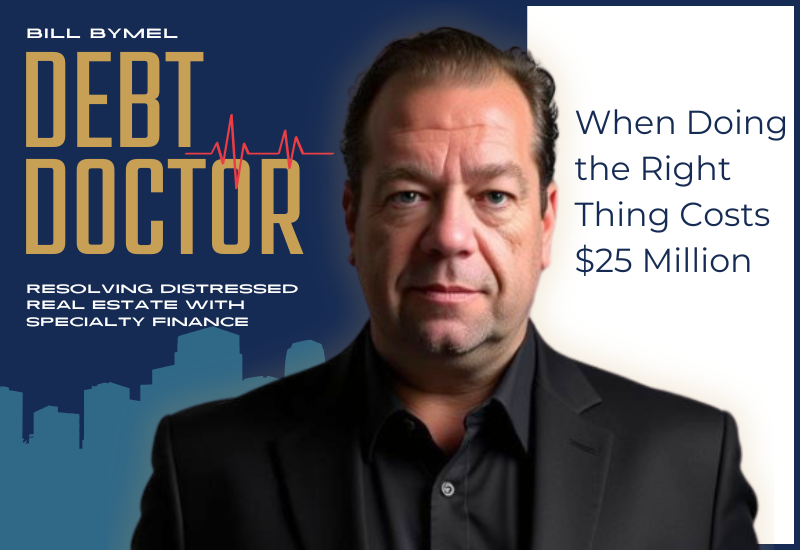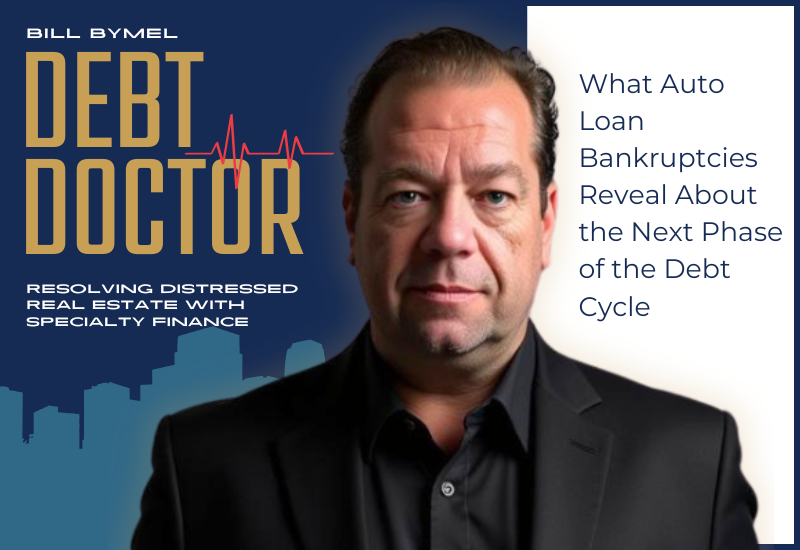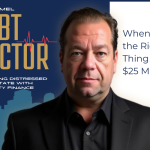What Auto Loan Bankruptcies Reveal About the Next Phase of the Debt Cycle
- All Posts
- Asset Evaluation
- Asset Management and Servicing
- Coffee with Bill
- Commercial Real Estate
- Debt Doctor
- Due Diligence
- Financing and Funding
- Industry News and Updates
- Investment Strategies
- Market Analysis and Trends
- Mortgage Note Investing
- Networking and Partnerships
- Press
- PropTech
- Real Estate Lowdown
- Real Estate Owned
- Secondary Mortgage Market
- Success Stories and Case Studies
- Win-Win Webinar
“When auto lenders fall, it’s not just about cars, it’s about the strain moving quietly through the entire credit system.”
When two major auto lenders, Tricolor and First Brands, went bankrupt, most people saw another blip in the business news cycle.
But if you look closer, these collapses tell a much larger story — one about how credit expansion, risk tolerance, and market confidence always follow a familiar rhythm.
For years, easy credit flowed through the system — car buyers stretched budgets, lenders stretched standards, and investors stretched timelines.
But every stretch eventually meets its limit.
We’re watching that moment unfold now.
The stress in subprime auto lending isn’t isolated. It’s the early echo of tightening liquidity across consumer finance and private debt.
Borrowers are defaulting not just because they’re reckless, but because the system itself was built on thin margins and temporary fixes.
Lenders, investors, and regulators are all feeling the same pressure — different positions, same wave.
History doesn’t repeat exactly, but it rhymes.
The signals today — opacity in private debt, shrinking credit availability, and shifting borrower behavior — feel eerily familiar to anyone who lived through 2008.
The difference this time is that the pressure points are more fragmented and less visible, hiding in niche corners of the market rather than big institutional banks.
Still, the outcome is the same: when easy money dries up, the cracks appear.
Now is the moment to pay attention, not panic.
Whether you’re managing a portfolio or a household budget, understanding where the tension lives in the credit ecosystem helps you make smarter, calmer decisions before those ripples reach you.
For a more detailed account of what these signals mean for both consumers and credit markets, check out this episode of Debt Doctor.
Subscribe to Debt Doctor on Apple, Spotify, YouTube or your favorite podcast platform.
I also encourage you to share this post with fellow investors who are as passionate as you are about transforming distressed mortgage debt into profitable opportunities.
👉 Listen Now on Apple
👉 Watch Now on Spotify
👉 Watch Now on YouTube
As always, I’d love to hear your thoughts, feedback, or questions about this topic, episode or the industry.
Feel free to reach out directly to podcast@billbymel.com if there’s a specific topic you’d like me to cover in upcoming episodes.
Catch you in the next episode,
– Bill Bymel, Debt Doctor
To advertise with Debt Doctor or request a podcast topic, please email podcast@billbybmel.com.
First Lien Capital is your trusted investment partner delivering security and strong returns while making real impact, and First Lien Resolutions is your Special Assets Group for hire delivering integrated resolutions to protect capital and restore performance to distressed real estate debt scenarios.
Schedule a consultation with Bill to ELEVATE or REVIVE your portfolio today.
Stay connected with Bill Bymel: https://linktr.ee/billbymel
Welcome

Bill Bymel
Distressed real estate investor and advisor. Founder and CEO of First Lien Capital LP, a privately owned distressed mortgage investment platform focused on the acquisition and timely resolution of sub-performing and non-performing mortgage loans.
Speaker, host of Debt Doctor and Real Estate Lowdown podcasts, and author of Win-Win Revolution: An Insider’s Guide to Investing in the Secondary Mortgage Market. New book coming late 2025 – The Storm: Financial Markets Meet Mother Nature.
Recent Posts
- All Post
- Asset Evaluation
- Asset Management and Servicing
- Coffee with Bill
- Commercial Real Estate
- Debt Doctor
- Due Diligence
- Financing and Funding
- Industry News and Updates
- Investment Strategies
- Market Analysis and Trends
- Mortgage Note Investing
- Networking and Partnerships
- Press
- PropTech
- Real Estate Lowdown
- Real Estate Owned
- Secondary Mortgage Market
- Success Stories and Case Studies
- Win-Win Webinar


Category
- Asset Evaluation (9)
- Asset Management and Servicing (9)
- Coffee with Bill (12)
- Commercial Real Estate (23)
- Debt Doctor (33)
- Due Diligence (8)
- Financing and Funding (23)
- Industry News and Updates (41)
- Investment Strategies (46)
- Market Analysis and Trends (38)
- Mortgage Note Investing (29)
- Networking and Partnerships (7)
- Press (6)
- PropTech (8)
- Real Estate Lowdown (10)
- Real Estate Owned (1)
- Secondary Mortgage Market (26)
- Success Stories and Case Studies (2)




